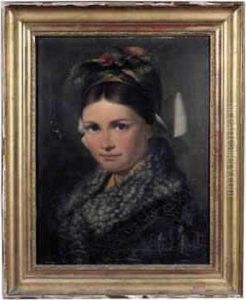Heinrich, Gotthold Arnold Paintings
Heinrich Gotthold Arnold was a German painter known for his work during the late 18th and early 19th centuries. Born in 1773, he lived during a period of significant change in Europe, including the French Revolution and the Napoleonic Wars. While not as widely recognized as some of his contemporaries, Arnold's work provides insight into the art and culture of his time.
Arnold's artistic style was primarily influenced by the movements of his era, such as Neoclassicism and Romanticism. Neoclassicism, with its emphasis on clarity, order, and idealized beauty, was a reaction to the ornate Rococo style and was inspired by the art of ancient Greece and Rome. Romanticism, on the other hand, emerged as a reaction against the perceived cold rationality of the Enlightenment, emphasizing emotion, individualism, and the sublime in nature.
Throughout his career, Arnold focused on a variety of subjects, including portraiture, landscapes, and historical scenes. His portraits often captured the social and cultural milieu of his time, offering a window into the lives of the bourgeoisie and the evolving notions of individual identity during the period. In his landscapes, one might find the influence of Romanticism, with an emphasis on the beauty and power of nature.
Unfortunately, detailed information on Arnold's life and works is limited, and he remains a lesser-known figure in the history of art. This can be attributed to a variety of factors, including the overshadowing fame of his contemporaries and the possible scarcity of surviving works. Nevertheless, Arnold's contributions to the art world of his time remain a subject of interest to art historians who specialize in the period.
Heinrich Gotthold Arnold passed away in 1834, leaving behind a body of work that reflects the aesthetic shifts and cultural developments of his time. While his name might not be widely recognized today, his paintings remain valuable for their historical context and as examples of the artistic transitions that occurred during his lifetime.
